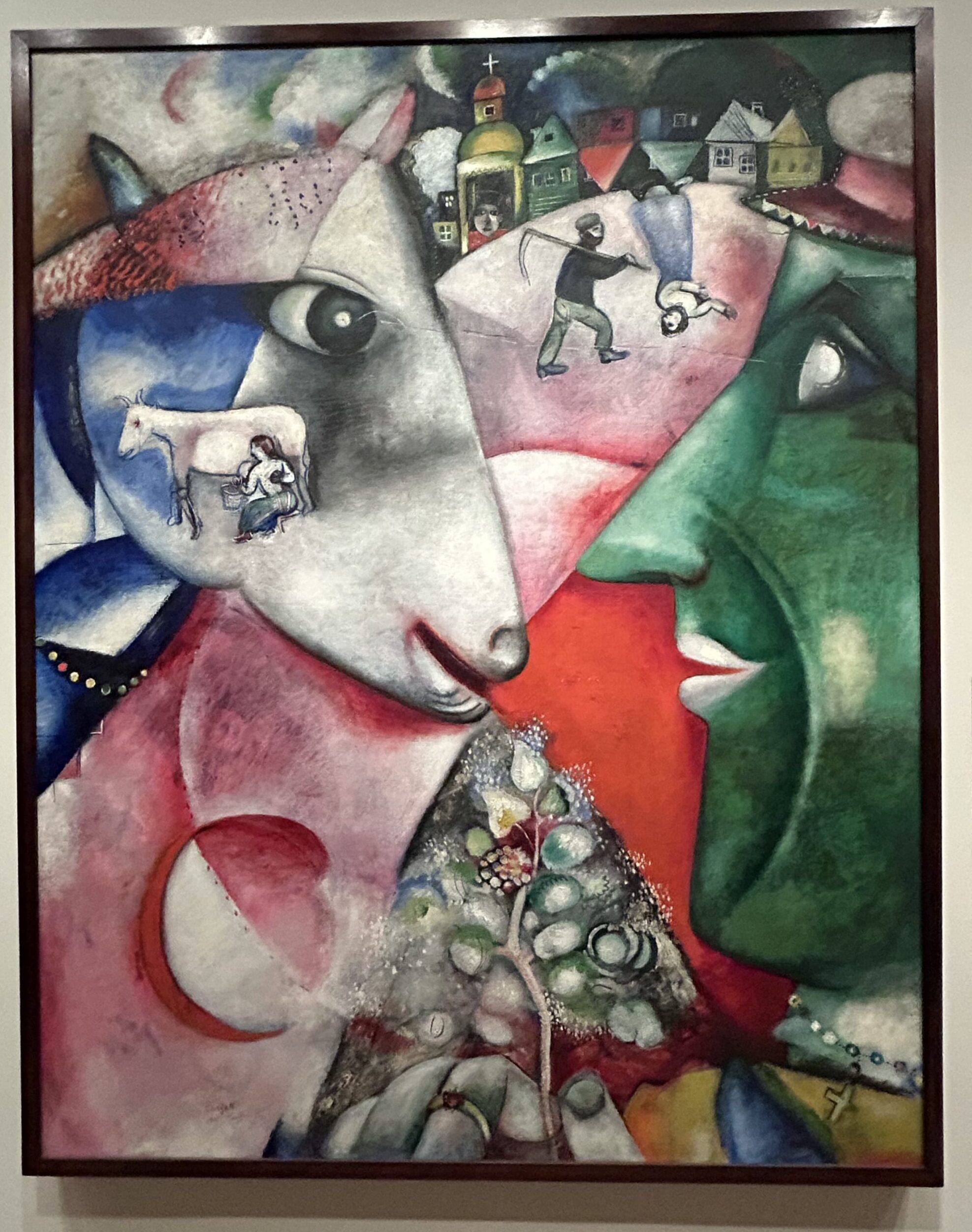The news of Maurizio Cattelan’s Comedian, a banana duct-taped to a wall, selling for staggering $6.2 million has been a point of discussion and amazement. Absurd? Yes. Intriguing? Absolutely. It was surely a moment that made me pause and think about the meaning of art in our world today. What makes something ‘modern’? What makes something be defined as ‘art’? What makes it valuable? And why do we love to debate the absurdities of contemporary art? This banana, both ridiculous and revolutionary, prompted me to delve deeper into the Museum of Modern Art (MoMA) in New York, a place that I had the good fortune to visit recently and that has been now defining and redefining modernity for nearly a century.
MoMA has always been a known to be a space where the boundaries of art are stretched and reshaped, a reflection of the times we live in. From radical abstractions to politically charged installations, the museum offers a timeline of our collective journey through creativity, culture, and change. As I spent the afternoon exploring this museum and its role in shaping what we call ‘modern’, I kind of see the banana not as an outlier but as part of an ongoing conversation about what it means to be alive in a world that constantly reinvents itself.
Coming to MoMA, its early years were steeped in revolutionary movements like Cubism, Futurism, and Surrealism, which sought to dismantle traditional ideas of art and form. Pieces like Picasso’s Les Demoiselles d’Avignon shocked audiences with fragmented perspectives and raw emotion, reflecting the anxieties of a rapidly industrializing world, alongside with artists like Marc Chagall, Henri Matisse and many more. As the 20th century progressed, Abstract Expressionism emerged, with artists like Jackson Pollock and Mark Rothko capturing post war existentialism and the newfound prominence of the United States in the art world. These works didn’t just redefine art; they embodied the fears, hopes, and contradictions of their time.
By the 1980s and 1990s, MoMA expanded its vision, incorporating global voices and non-traditional mediums. This shift reflected the interconnectedness of a globalized world and the necessity of including diverse narratives in the definition of ‘modern’. Artists like Yayoi Kusama, Peter Saul and Richard Serra brought fresh perspectives on identity, culture, and history, using art to dissect societal norms. The inclusion of conceptual and multimedia art further blurred the lines of what could be considered art, engaging with audiences in new, interactive ways.
In the 21st century, MoMA continues to challenge the boundaries of modernity. From digital installations to discussions of NFTs, the museum is at the forefront of exploring art’s place in a tech-driven world. Exhibitions on climate change, social justice, and AI reflect the museum’s role in confronting contemporary issues head-on. Modernity is no longer just about aesthetic innovation; it is about engaging with the world’s most pressing challenges through the universal language of art.
Modernity often flirts with absurdity, and few examples capture this as vividly as Maurizio Cattelan’s Comedian, the banana duct-taped to a wall that sold for $6.2 million. While MoMA did not exhibit the piece, it aligns with the museum’s ethos of pushing boundaries and sparking dialogue. Is it a critique of art’s commodification? A tongue-in-cheek commentary on consumerism? Or simply a joke taken too far? The absurdity of Comedian embodies the contradictions of modern art—its ability to provoke laughter and outrage while reflecting the world we inhabit.
Art’s journey through time, from Picasso’s revolutionary forms to today’s conceptual provocations, is a testament to the museum’s role as a steward of modernity. It invites us not just to view art but to engage with it, to question our assumptions and expand our horizons. Perhaps that is the essence of being “modern”—to embrace the absurd, the beautiful, and the profound in equal measure. And sometimes, to see all of this in a simple banana taped to a wall.
The journey of modern art, from Picasso’s revolutionary forms to today’s conceptual provocations, is a testament to its role as a reflection of modernity. It invites us not just to observe but to engage, to challenge our assumptions, and to expand our perspectives. Perhaps that is the essence of being ‘modern’ – to embrace the absurd, the beautiful, and the profound in equal measure. And sometimes, to find all of this encapsulated in something as simple as a banana taped to a wall?
Images:
- MoMA, NYC
- Pablo Picasso, Les Demoiselles d’Avignon – 1907
- Marc Chagall, I and the Village – 1911
- Diego Rivera, Cubist Landscape – 1912
- Henri Matisse, The Moroccans – 1915
- Joan Miro, The Birth of the World – 1925
- Pablo Picasso, Girl Before a Mirror – 1932
- Pablo Picasso, The Cock- 1938
- Mark Rothko, 403 – 1949
- Jackson Pollock – One: Number 31, 1950
- Andy Warholl, Cambell Soup Cans – 1962
- Peter Saul, Ice Box #9 – 1963
- Richard Serra, Verb List – 1967
- MoMA Postcard collection – Collaboration & Creativity on Blockchain
- Maurizio Cattelan – Comedian – 2019
















